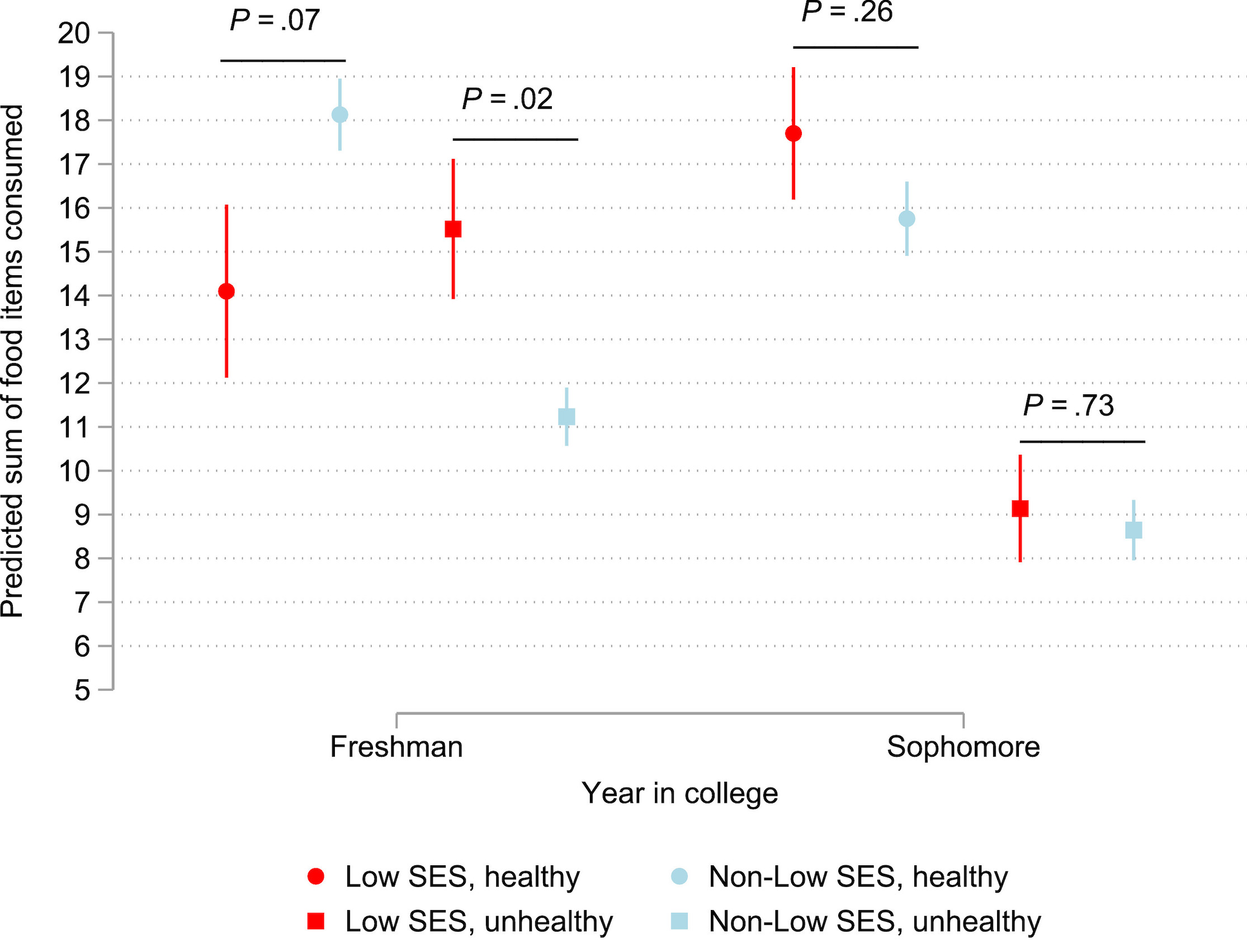 Point estimates, standard error (SE) bars, and P values for predicted total number of healthy (circle) and unhealthy (square) food items consumed over 3 days by year in college and low (red) and high (blue) socioeconomic background.
Point estimates, standard error (SE) bars, and P values for predicted total number of healthy (circle) and unhealthy (square) food items consumed over 3 days by year in college and low (red) and high (blue) socioeconomic background.
Does Socioeconomic Status Determine Diet Quality if Food Access, Resources, and Nutrition Education are Equalized? An Exploration of College Student Diets
Abstract
Objective: To investigate the existence and trajectory of diet disparities among college students from different socioeconomic statuses (SESs). Methods:A random sample of freshman and sophomore students was invited to participate in an online survey on eating behaviors. Ordinary least squares regressions were fit to 148 complete responses to examine the association between family income ≤200% of the federal poverty level and overall, healthy, and unhealthy food consumption. Results: Low-SES students reported eating significantly more unhealthy food during their freshman year than their non–low-SES peers. This difference is not statistically significant for second-year students and robust to on-campus spending power. Conclusions and Implications: Disparities in diets for students from different socioeconomic backgrounds that were observed in the freshman year of college were absent in the sophomore year. Awareness of these disparities and trend is important to broadly promote healthy eating.